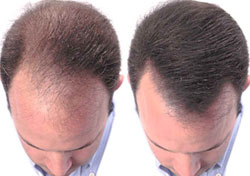You’ve probably heard of Dolly, the sheep who was cloned from an adult cell. Science has made it possible for us to clone, not just sheep, but also water buffalos, mice, tadpoles, monkeys, and even endangered species. But have you heard of hair transplant cloning? Such technology is considered an answered prayer for many hair transplant surgeons and patients because it makes it possible for people to get an unlimited donor supply, which is important for transplantation. But what exactly is hair transplant cloning and how does it work? You’ll find the answers to these questions in this section.

Understanding Hair Transplant Cloning
Cloning is the process of producing genetically identical life forms. In terms of hair cloning, the process creates a great number of hair follicles from just one hair follicle. Scientists refer to it as tissue engineering or cell therapy. With this technique, hair follicle cells (dermal sheath cells) are isolated and then grown in a laboratory setting while being bathed in a culture medium inside a suitable environment. With hair transplant cloning, it is possible to create thousands of hair follicles from just a single follicle, which makes it very easy and convenient to treat patients with balding problems as well as those who are suffering from hair loss due to burns and trauma.
A Brief History
It was leading hair transplant surgeon Dr. Gary Hitzig who discovered how hair cloning could be done. He found out that MatriStem powder could be injected onto the donor sites as well as the recipient sites when dissolved in blood serum containing adult stem cells. On the other hand, Dr. Colin Jahoda made a breakthrough discovery when he found that dermal sheath cells from his own scalp were able to stimulate hair growth when he transplanted them onto his wife’s skin. And just recently, Dr. Robert Bernstein has been given permission to study the different applications of the ACell MatriStem, which could very well enhance and boost hair cloning methods in the future.
Benefits of Cloning Hair
Indeed, the use of hair transplant cloning offers several benefits. For one, it will make it easier for surgeons to acquire the needed number of hair follicles for a particular patient. So, if a patient has a severe balding problem and does not have enough hair to compensate, then cloned hair may just be the answer. Another benefit of this biotechnological advancement is that it makes permanent hair loss treatment more affordable for everyone. At the moment, hair transplantation costs at least a few thousand dollars but with the use of cloning, the price could significantly be reduced.
The Future of Hair Transplant Cloning
At the moment, the procedure is still undergoing further research and experimentation to ensure that it will be safe and truly effective for those who will benefit from it. There are obstacles that need to be overcome, such as ensuring that the implanted cells will be able to create the same characteristics as the original cell, especially its aesthetic characteristics. Another concern is the possibility of causing tumors when the cloned cells are implanted onto the skin though such possibility has not yet been proven. Government regulators, particularly the FDA, want to make sure that such method will be completely safe for public use before it will be given the green light, which could take up to 5 years.
